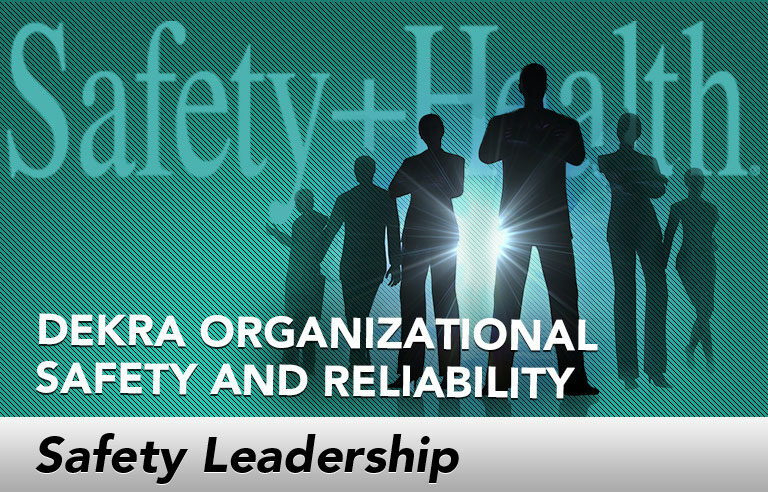Safety Leadership: Safety analytics – Building your team

Editor’s Note: Achieving and sustaining an injury-free workplace demands strong leadership. In this monthly column, experts from global consulting firm DEKRA Insight share their point of view on what leaders need to know to guide their organizations to safety excellence.
The ultimate goal of safety analytics is to predict injuries so they can be prevented. Analytics find patterns and relationships in data that can reliably mitigate a problem or reproduce a success.
Many leaders have had enough exposure to statistics and analysis to know how to make good summaries, comparisons and produce correlation statistics. Yet many organizations desire to go further. They would like to test changes or correlations to ensure differences or relationships are more than random, or even delve into knowledge discovery and the use of analytics for problem-solving. In this, having the right team can make all the difference.
A team for discovery
Analytics is not a sideline pursuit. Leaders who are serious about using analytics repeatedly and for their broader business needs should plan to invest in a team. So what would an analytics “dream team” look like? In a startup, you would want to include:
- A management sponsor who can bolster credibility when engaging subgroups of the business and ensure resources. As the capacity for analytical exploration grows, the organization will benefit from imbedding analytics in the way things are done.
- A consultant who knows statistics and statistical software well. Look for software-agnostic consultants who have used more than one tool. If you want the capability in-house, you want someone who knows how to walk you through the process and teach others.
- A generalist analyst can be the primary doer of the work in the beginning. This person needs to handle databases and software, know statistics or economics to some extent, collaborate with consultants to ensure the models are correct, and be able to report results. Communication and planning skills are important. As the function grows, this individual can take the role of team lead or manager. Management processes need to grow up around the service as it is built. Recording and maintaining best practices, communicating, and providing training are ongoing.
- Domain experts who know the problem and the data well enough to support the team in knowing whether the data that is available will help get them a good answer. Domain expertise may be gathered through the local subject matter experts initially. As analysts gain experience with the problems and data, they will develop domain expertise as well.
As you expand, you will want to add:
- Internal technical/quantitative resources that will support the team as it tries tackling more varied problems. Reuse of models already developed with consultant support needs to be carefully done, requiring enough technical know-how to modify or select models for different explorations without turning to an external consultant every time.
- Database engineering/warehousing expertise to help analysts get the data they need faster and in the many ways that it may be needed to accomplish a study.
The right fit
Capabilities are just the beginning. As with any human endeavor, individual qualities are critical. Look for inquisitive employees ready to investigate questions and brainstorm what data might be relevant to address a problem. On the other hand, you also want analysts who are methodical and can properly and carefully interpret statistical tests and organize data. Good analysts will consistently look for ways to advance knowledge and skill in their area of expertise. It’s important for the analyst to know the tools and how they work, but not be static in the tools they employ. New algorithms and better methods are being developed all the time and may provide better insight than older methods.
Overall, look for people with tenacity. Developing and executing analytics projects can have many hurdles and a long runway. Employing analytics is employing a discovery process more than a decision-making process. Broad curiosity and patience for exploration are essential. The effort will pay off.
This article represents the views of the author and should not be construed as a National Safety Council endorsement.
 Gennifer Lyon is manager of research and development at DEKRA Insight, where she designs and supports safety improvement technologies. Leveraging applied research and evidence-based methodologies, Lyon helps clients achieve their highest safety objectives.
Gennifer Lyon is manager of research and development at DEKRA Insight, where she designs and supports safety improvement technologies. Leveraging applied research and evidence-based methodologies, Lyon helps clients achieve their highest safety objectives.
Direct to your inbox: Sign up to be notified in email about new "Safety Leadership" columns.
Post a comment to this article
Safety+Health welcomes comments that promote respectful dialogue. Please stay on topic. Comments that contain personal attacks, profanity or abusive language – or those aggressively promoting products or services – will be removed. We reserve the right to determine which comments violate our comment policy. (Anonymous comments are welcome; merely skip the “name” field in the comment box. An email address is required but will not be included with your comment.)

